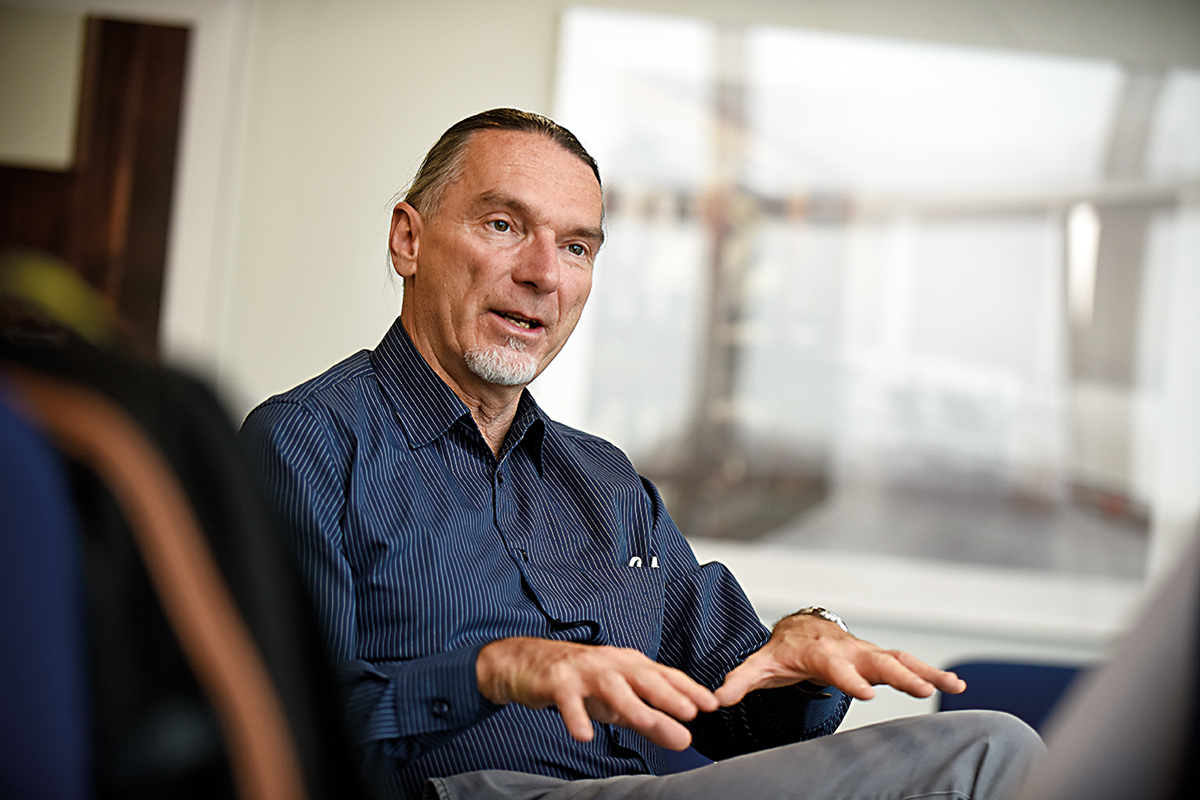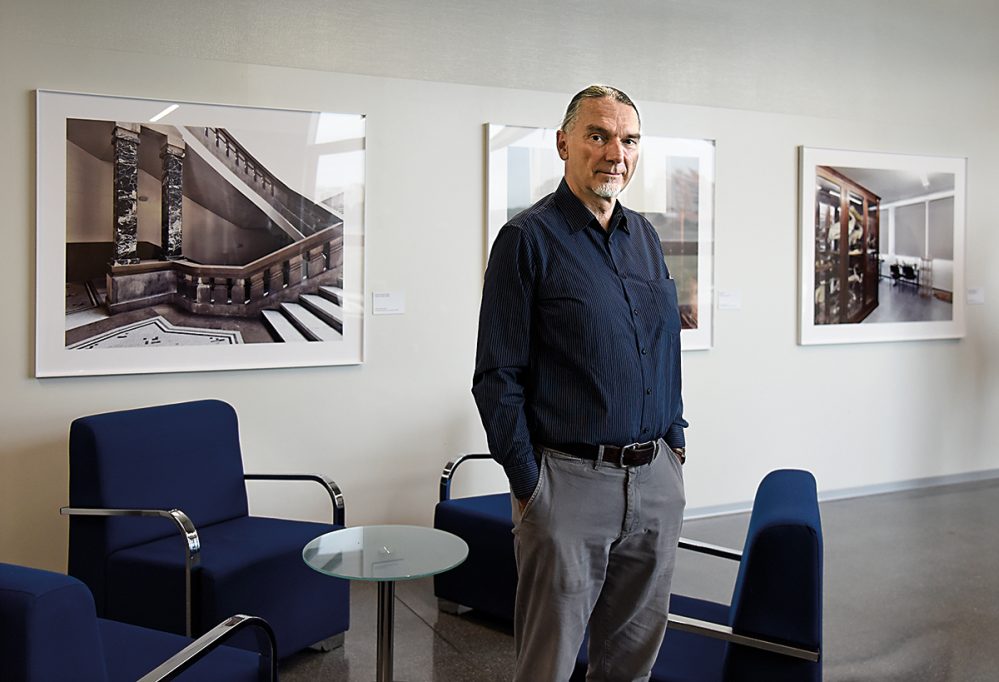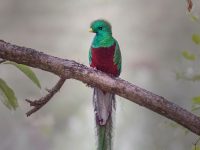Interview with Andreas Wagner
«We can learn from biology that it can be very important to tolerate mistakes»
Evolutionary biologist and professor at the University of Zurich

Every year, the Cavanilles Institute of Biodiversity and Evolutionary Biology hosts the Pelegrí Casanova Memorial, an annual conference that celebrates the long evolutionary tradition of the University of Valencia by inviting world-class evolutionary biologists to give a plenary lecture on topics at the frontiers of knowledge in ecology and evolution. In 2022, the Memorial was attended by Dr. Andreas Wagner, director of the Department of Evolutionary Biology and Environmental Studies at the University of Zurich (Switzerland), as well as external professor at the Santa Fe Institute in New Mexico (USA) and elected member of the European Molecular Biology Organization (EMBO) and the American Association for the Advancement of Science (AAAS). Dr. Wagner is a leading figure in the study of evolutionary innovations, a subject on which he has also written popular books that have received various awards. The conference took place in the Darwin Hall of the Burjassot Campus and was a complete success. Before his superb speech, we had the opportunity to talk to him about how innovations arise during evolution, their importance for understanding the history of life on this planet, and about creative processes in general.
What is robustness, and why is it important in evolution?
Well, robustness is the ability of an organism to withstand mutations, to survive in the presence of mutations, mostly in its DNA. It is a remarkable property, considering how complicated biological systems are. Even the simplest microbial cell, like Escherichia coli, consists of billions of proteins that perform complicated biochemical jobs inside the cell. And it is not clear a priori that a system as complicated as that would not just fall apart like a house of cards if you change any one of its components. Yet, these components change all the time through DNA mutations that randomly alter that DNA. So, the very fact that systems as complicated as that can be, to some extent, robust to DNA change, is remarkable. And, of course, it is not just simple bacterial cells that are robust, higher organisms like us, for example, are just as robust to mutations.
You have devoted much of your career, as well as your book Arrival of the fittest, to understand evolutionary innovations. Why?
I am personally fascinated by the process of how new things come into the world. To understand that fascination, perhaps it is useful to step back in time, before Darwin, when creation was actually not considered an ongoing process in life. The world was created at some point and, ever since then, not much really changed. It was really Darwinian thinking, Darwinian evolutionary biology, that created the possibility for us to think about how innovation occurs, because it was the first major current of thought that established innovation as an important part of studying life. Even in more modern times, it has not been self-evident that evolution can bring forth innovations. For example, just consider the intelligent design creationist current of thinking. Intelligent design creationists argue that evolution might change a few things here and there at the margins of what has been created by an intelligent God, but that, overall, evolution cannot create anything substantially new. We now have a lot of evidence that that is not the case, that evolution can indeed create and can even do so on very, very short evolutionary time scales. So, I think it is an important thing to study innovations, and the question how and why biological systems can be innovative.
You have done pioneering work on genotype networks and how they may aid our understanding of how innovation come across, how life finds new solutions to problems solved by the environment. How would you explain the concept of a genotype network and how it may aid our understanding of innovation?
This will require more than 25 words, as it is a fairly abstract concept. It is best to illustrate it in terms of an example within a biological system, such as proteins. We know that proteins are long chains of amino acids where each amino acid in such a chain can have one of 20 different identities, and we know that a lot of proteins comprise many different amino acids. For example, for a protein 100 amino acids in length, we could think of 20100 possible amino acid chains. This is an enormous space of possibilities, of possible proteins, and all proteins that we know to perform any important function in life must exist within this general space. Now, one fundamental question you can ask about this space is: how are proteins that do different kinds of things, such as catalyse chemical reactions, transport molecules, or communicate between cells, organized within this space? One possibility might be that there is one corner of this space where all the proteins that catalyse particular chemical reactions are organized, and another space where proteins that do something else are organized and so forth. But, when scientists started analysing the organization of this space, they found a completely different kind of organization. The first thing they found is that for any one protein that does a particular job, let’s say to destroy an antibiotic, there are many amino acid chains that can perform the same job. So, there is many such chains that perform the same job. And these chains are not generally just located in some specific region of this space of possible amino acid chains. Instead, they are spread out very far through that space. And what is more, they are actually connected in a network-like fashion. And this now comes back to the core of your question. That is, if you take such an amino acid chain that is able to destroy an antibiotic, and you change that chain by a single amino acid, very often that change preserves the ability to destroy the antibiotic. Then you go one step further and another amino acid changes, and you still find chains that are able to destroy the antibiotic. And if you keep doing this you find that you can walk pretty much all the way through this possible collection of amino acid chains until you have arrived at a chain that is very different from the one you start out with, all the while preserving the original function of that protein. This is the notion of a genotype network. That is, it is a network of genotypes, in this case of amino acid chains, that are connected through small mutational steps that preserve the ability of a protein to perform a particular job.
I guess then we can think of a population of individuals as a collection of explorers traversing this network, while retaining the same function?
Exactly. In our example, it may be important for a population of bacteria to preserve a protein’s ability to destroy an antibiotic. Well then, this population of bacteria, via single mutations in the DNA sequence that encodes this protein, would be able to spread out through this space along such a genotype network, because the different genotypes that confer this function are interconnected in this network. Another striking phenomenon we have come to understand to be important for evolution is that different genotype networks with different functions are highly interwoven. That is, for example, a genotype network of proteins with a given antibiotic resistance function, and a genotype network of proteins with a role in transporting molecules may overlap, such that they form a complex tapestry or fabric in this space. Importantly, this means that you can actually, by just a few amino acid changes, a few simple mutational steps, often jump from one genotype network to a completely different one, for proteins performing different jobs. Together, these two properties, the existence of genotype networks and the fact that they are interconnected, will facilitate evolutionary innovation. While a population explores a genotype network through Darwinian processes like random mutations and selection, some of its members will step off the network into a new one. Many of the mutations that cause them to step off the network will be damaging, deleterious, detrimental, and natural selection will eliminate them. But some of them will provide a beneficial new function that allows them to survive.

And I guess this is a way in which robustness and innovation are intimately linked?
Yes, that is one of the connections between the two, because you can actually not just explore a given genotype network in one direction, but in multiple directions and in multiple different ways, and still preserve this ability to perform the original function. What this means is that the ability to perform a biological function is to some extent robust to mutations. It is preserved even when mutations occur. And one can show mathematically that it is actually this very robustness that is an essential prerequisite for the existence of such genotype networks, allowing individuals to explore new regions of genotype space and discover new biological functions. So, these two properties, robustness and the ability to innovate, are intimately linked with one another.
Fascinating. In your latest book Life finds a way you talk about creativity and how this concept is related to evolutionary innovations. You explain how weak natural selection may have actually allowed life to be more creative. Can you explain?
Yes. In order to understand this, it is useful to invoke a different kind of metaphor, the metaphor of an adaptive landscape, which is probably one of the most defining metaphors in all of evolutionary biology. An adaptive landscape is an analogy to a physical landscape around us, where every point in space of such a landscape corresponds to a particular genotype, for example a protein with a specific amino acid chain. In this landscape, the elevation at each location corresponds to the fitness of a biological system that harbours a protein with this genotype. Locations or genotypes with high elevation have high fitness, those with low elevation have low fitness. Now, we know through experimental analysis of specific adaptive landscapes that these landscapes are rugged to some extent. That is, they have multiple peaks and valleys which, it turns out, can be quite a problem for adaptive evolution. The reason is that natural selection can only drive a population up the nearest hill of a landscape, because it can only select genotypes that increase in fitness. However, in an adaptive landscape, there may be many low-lying hills and only a few very high peaks. High peaks represent places where organisms or genotypes with the largest fitness will reside, and that is where you eventually want to go to. The problem, once you are on a low-lying hill, is how to get to a high peak, because you have to traverse one or more valleys to get from a low hill to a high peak. Natural selection does not allow you to do that. Natural selection, by definition, is a force of evolution that always drives you uphill in such a landscape. So, there need to be other mechanisms to allow a population to do that. And there is a variety of these mechanisms. One of them is to weaken selection, so that you basically allow a population to descend through a fitness valley because its evolutionary dynamics is now not completely driven by selection. Again, there is a variety of ways to doing this, and one of them is to make populations smaller. In small populations, we know an evolutionary force called genetic drift becomes important that is very different from natural selection. Genetic drift causes populations to essentially bump around randomly in the landscape. Through his bouncing around, populations can more easily traverse a valley between two adaptive peaks.
«A strong science and math training should not come at the expense of subjects that preserve and enhance creativity»
So, it seems we have learned a lot about creative processes in evolutionary biology. Have we learnt something about these processes that better allows us to understand other creative processes, such as human creativity?
It would be preposterous to assume that everything we have learned about biological creativity would also apply, for example, to the human or the engineering domain. But I think there are some lessons that can be learned from biological creativity for a variety of different forms of human creativity. We can talk about a very concrete example. Engineers are always working to improve the devices they design, and it turns out that evolutionary principles can actually help them a lot in doing so. There is an area of computer science that is variously called evolutionary programming, genetic programming, or genetic algorithms, that uses principles gleaned from biology to improve engineered devices. This area has brought forth some spectacular results in terms of engineered devices like antennas that can operate in outer space, which have been designed by genetic algorithms. That is, a computer program guided by evolutionary principles, essentially optimizes their organization in a way that is superior to what humans have come up with before. So, in human engineering, there are very concrete examples of how evolutionary principles such as mutation, selection, and recombination can help us improve engineering devices.
And beyond that?
Beyond just engineering, there is also the question of whether human creativity shows parallels to biological evolution. This is a question that has been asked for a long time. In fact, it has been asked since before Darwin’s time, when prominent thinkers argued that our brains essentially generate random thoughts, random ideas, new concepts all the time, and then we somehow select those that work best for a particular purpose. In this view, what is going on inside our head is kind of a microcosm of the mechanism of Darwinian evolution. Of course, we do not really have that detailed an insight into what is going on in our head in bringing forth new ideas and concepts, but there are intriguing parallels. To this day, prominent scientists, such as cognitive psychologists or researchers who compare the patterns of discovery in the history of science with patterns of discovery in biological evolution, argue that there are deep parallels between the two processes. If that is really true, then I think we can try to apply some of the principles we have learnt about how evolution explores adaptive landscapes to human creativity. It has not been done very systematically yet, but I think it is a very important area of future research.
Intriguing. So, much like wandering around a genetic genotype network, a properly wired wandering mind might be better suited to stumble upon creative solutions?
Exactly. That is one of the ideas. Psychologists study the process of mind wandering, and they find that wandering minds can sometimes be more creative than minds that very laser-focused on a particular topic.
One last question to wrap up. What do you think about our education system? In particular, is how scientists work well tailored to maximize creativity? Does it provide enough room for wandering and error-making to foster creativity?
I think that one important lesson that we can learn from biology is that, in some circumstances, it can be very important to tolerate mistakes, to tolerate the kinds of DNA mutations that may not be useful at any one point in time, but may become useful later on. By analogy, I think it would be a mistake to design an educational system in the way that some Asian education systems are built right now, where penalties for errors, for example in single exams that decide on the entire career potential of a young person, are severely punished. If you fail a single exam in your life, then your future path to higher education may be closed, right? So that would be the wrong thing to do. If you want to preserve creativity in people, you need to create spaces for them where mistakes are not a problem, where they can be tolerated. This does not mean that all educational spaces need to be like that, but some of them at least. This argues in favour of the continuity of certain subjects in school, where creativity is arguably very important, such as music, the arts, etc., which I understand are slowly being whittled away in many countries in favour of the hard sciences. I am a scientist myself and I have no problem with strong science and math training, but that training should not come at the expense of subjects that preserve and enhance creativity in people.





